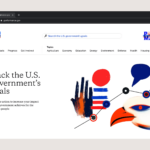Major transformations in the talent landscape have emerged due to economic volatility, shifting demographics, and fierce competition for vital skills. These changes have put immense strain on talent management’s goal of achieving workforce agility—placing the right talent in the right position at the right moment. As a result, attracting and keeping skilled employees has become a critical concern for CEOs worldwide.
Gartner’s June 2024 report shows that 41% of companies acknowledge a skills gap in their workforce, 50% admit they fail to fully capitalise on the skills available, and 62% see uncertainty about future skills as a significant threat. Essentially, today’s talent is not equipped to meet current or future demands, contributing to a 26-percentage point decline in employee performance.
Organisations are in urgent need of strategies to create a more adaptable workforce. HR and L&D leaders are aware of the necessity for greater workforce flexibility and are investing toward this goal. However, these investments are not yet translating into talent readiness. Gartner’s research highlights that companies taking a more precise approach to talent fluidity can boost talent readiness by up to 60%
So, how can organisations target talent fluidity?
The power of precise skills intelligence
Ensuring the organisation has the skills it needs requires precise skills intelligence – comprehensive insights into current capabilities within the workforce and the skills required for future success. However, developing and maintaining such skills intelligence has proven to be more resource-intensive than many expected. This requires significant investments in data and technology and ongoing analysis to ensure talent strategies are aligned with rapidly changing business demands.
Currently, only 8% of HR leaders feel confident that they have accurate data on the skills their workforce holds, according to Gartner research. This creates a major obstacle in assessing current skill gaps and anticipating future needs.
L&D and HR leaders should adopt a targeted strategy by prioritising investments in skills intelligence for roles that have the greatest impact on evolving business needs. The focus should then be further narrowed to include highly dynamic positions that are particularly affected by rapid market shifts.
By gaining a clearer understanding of the organisation’s capabilities and needs in these key areas, Learning and development teams can concentrate their resources where they will have the most significant effect on business outcomes.
Gartner’s research identifies that HR and L&D teams should prioritise proficiency in today’s core skills over learning future skills.
Don’t overlook the personal costs of mobility
Where the organisation faces challenges in sourcing talent from the external labour market, encouraging internal mobility becomes an essential element of any strategy to bridge the skills gap. But in this effort talent management faces significant challenges in overcoming traditional employee and manager mindsets.
Today, employees don’t pursue mobility. Employees’ number one barrier to mobility is that they don’t find internal roles appealing. And managers share this reluctance, with just 1 in 2 managers saying they want employees to grow their careers even if it means losing talent on their team.
Although people leaders recognise the benefits that internal mobility offers employees, they frequently overlook a key aspect: the personal risks and costs employees associate with such moves. Instead of concentrating solely on the potential advantages of internal transitions, organisations must also address any employee concerns, thereby mitigating a significant barrier to internal mobility.
Focus on today’s skills requirements first
Gartner finds that 79% of CEOs say they’ll have a new growth and transformation strategy ready heading into 2025. Employees need the skills that are essential to their performance today, but they also need those that will support their performance tomorrow.
Yet only 23% of organisations effectively develop skills for the future. HR leaders rank the skills gaps as the number one risk for their organisations and addressing unclear future skill needs as the number two risk.
Gartner’s research identifies that HR and L&D teams should prioritise proficiency in today’s core skills over learning future skills. Focusing on today’s skills has a five times greater impact on sustained performance than the skills of tomorrow.
In today’s rapidly evolving business climate and labour market, organisations need a targeted approach to talent fluidity. This means L&D leaders must focus the work they’re already doing to understand skills supply and demand by differentiating their investments in skills intelligence.
They must finish the work they’ve already started to get employees bought into internal mobility by focusing on the personal costs that managers and employees feel about internal moves.
Last, they should free themselves from the work they’ve been trying to do to balance current and future skills by focusing on those skills that have the greatest impact on performance now and into the future: today’s core skills.
Your next reads:
Skills-based organisations: The role of learning and development
Why we need to flip the skills script



